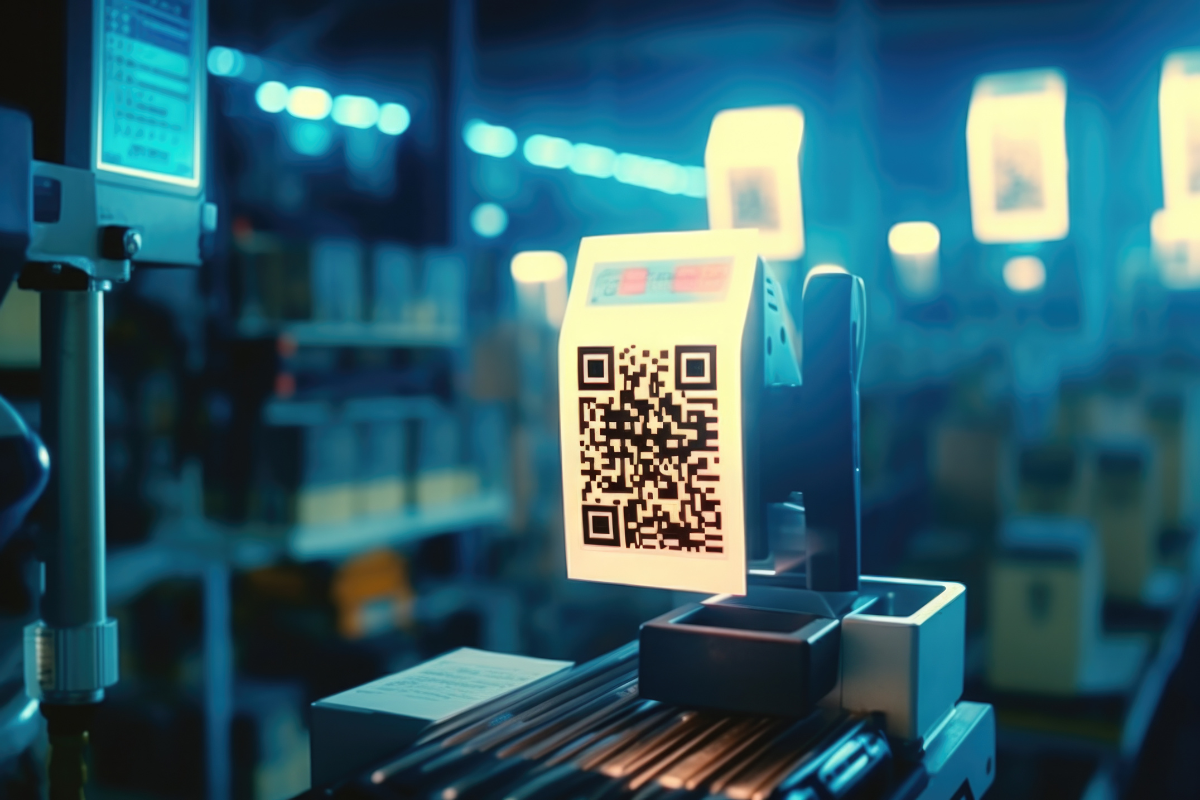The Global Lubricants Market was valued at USD 142.77 Billion in 2023 and is expected to reach USD 206.69 Billion by 2032, at a CAGR of 4.30% during the forecast period 2023 – 2032.
In the lube industry, track and trace has become increasingly essential as manufacturers strive to enhance supply chain efficiency, increase transparency, and ensure compliance with regulations. It plays a significant role in channel performance management by providing real-time visibility into product movement from production through distribution channels. This allows companies to monitor inventory levels accurately, reduce losses due to theft or counterfeiting, and improve customer satisfaction rates.
Overall, integrating track and trace technology into channel performance management enables lubricant manufacturers to gain competitive advantages by reducing costs, enhancing productivity, ensuring regulatory compliance, and building trust with customers.
QR Codes: The Backbone of Modern Track & Trace Systems
Track & trace systems, often utilizing QR codes, provide unique identifiers for each product, ensuring real-time tracking and data capture. While QR codes are a popular choice, other methods like RFID tags and barcodes are also used to achieve seamless supply chain management.
Here’s How Incorporating QR Codes Contributes to Better Channel Performance Management for The Lube Industry:

QR codes have emerged as a game-changing tool for improving channel performance management across industries, including the lubricants market. Integrating QR codes into the tracking and tracing process offers numerous benefits, ranging from enhanced data accuracy to streamlined operational efficiencies.
(1) Improved Data Accuracy: QR codes enable automatic scanning and recording of relevant information at each stage of the supply chain, eliminating manual errors in inputting data. This ensures accurate and reliable records throughout the entire process.
(2) Streamlined Operations: QR codes automate many manual tasks involved in traditional tracking methods, saving time and resources while increasing efficiency. As a result, companies can manage larger volumes of products without compromising on quality control standards.
(3) Greater Transparency: QR codes provide instant access to critical information about a specific product, enabling stakeholders along the supply chain to collaborate effectively and make informed decisions quickly. Increased transparency fosters improved communication between suppliers, distributors, retailers, and consumers.
(4) Real-Time Visibility: QR codes offer continuous monitoring capabilities, allowing manufacturers and distributors to observe product movements 24/7. This enables them to respond promptly to issues arising during transport or storage, minimizing delays, and maintaining optimal inventory levels.
(5) Compliance Management: QR codes facilitate easier verification of compliance with regulatory standards and guidelines. By storing necessary documentation digitally, organizations can effortlessly present proof when needed.
Benefits of Using Track and Trace Systems for Simplified Inventory Management in The Lube Industry
Using track and trace systems brings about multiple advantages for inventory management processes. Here are some key highlights:
(1) Enhanced Visibility: By constantly tracking every item moving within your supply chain, you’re able to get a holistic view of inventory levels and spot bottlenecks immediately. This leads to quicker response times and faster resolution of problems.
(2) Improved Accuracy: Manual record keeping tends to lead to inaccuracies due to human error, whereas track and trace systems automatically eliminate most of these errors by logging everything precisely.
(3) Speedier Decision-making: Access to real-time information allows you to make decisions much faster than relying solely on outdated records. This means you can react promptly to shifting market conditions or supplier disruptions.
(4) Cost Savings: Fewer mistakes mean fewer penalties or fines, less wasted material, reduced labour costs spent on rectifying errors, etc., translating into tangible financial savings for your organization.
Regulatory Compliance: Many industries require strict adherence to safety and security protocols, which can be challenging to enforce without automated tracking mechanisms in place.Customer Satisfaction: Fast, accurate delivery ensures satisfied customers who feel confident doing business with you again.
Role of Track and Trace System in Channel Movement Process (Pl to Retailer)
Track and Trace is an essential process in the supply chain, especially when it comes to moving goods from the plant to the warehouse, then to the distributor, and finally to the retailer. It involves monitoring the movement of products from the manufacturer to the end user to ensure accuracy, efficiency, and compliance with regulations.
The process starts at the plant, where the manufacturer produces and packs the finished goods. The Track and Trace system is then implemented to record the details of the shipment, such as the location, quantity, and status of the products. This information is then relayed to the distributor, who receives the goods and may further process them, such as repackaging or labelling for specific retailers.

As the goods reach the warehouse, the Track and Trace system plays a crucial role in ensuring that the right products are received and stored correctly. This is important for inventory management, as it allows businesses to track their stock and ensure that products are not lost or misplaced.
When the goods are ready for shipment to the retailer, the distributor is responsible for the movement of the goods to the retailer’s store. The Track and Trace system helps in managing the logistics of this movement, such as coordinating transport and ensuring timely delivery.
Adopting GS1 Standards for Improved Channel Movement Communication and Transparency in Supply Chain Operations
GS1 standards promote transparency throughout the entire smart supply chain solution while maintaining privacy and confidentiality. They provide guidelines for companies wishing to adopt electronic identification systems like RFID technology, bar code systems, GPS tracking devices, radio frequency identification (RFID), serial numbers, and Electronic Product Code (EPC).
Compliance with GS1 standards allows businesses to better communicate and share data across suppliers, distributors, retailers, and consumers worldwide. They enable effective coordination of materials flow along the channel, improve automation in warehouses, facilitate faster shipping procedures, minimize errors and fraud, increase accountability, enhance quality control measures, lower transportation costs, and support environmentally friendly practices.
Track and Trace System: Specifically Focusing on Loyalty Programs for Retailers and End-users in The Lubricant Industry:

(1) Customer Loyalty Programs: An Overview
Definition: A customer loyalty program is a strategic marketing approach that recognizes and rewards loyal customers, encouraging them to continue purchasing or engaging with a brand.
Rewards: These programs offer incentives such as gifts, discounts, points, or exclusive benefits to customers. The value or frequency of rewards typically increases as customers make more purchases.
Goals: Beyond enhancing customer retention and growth, loyalty programs aim to transform regular customers into brand promoters.
Types of Programs:
Loyalty Points Programs: Customers earn points for every purchase, which they can redeem for credit, discounted services, or giveaways.
Tiered Programs: Customers progress through tiers based on their engagement levels (e.g., purchase history). Each tier offers different benefits.
(2) Track and Trace System Integration:
User-Friendly Interface: Design an interface for customers to track their progress, redeem rewards, and engage with the program.
Data-Driven Insights: Leverage data from the system to personalize rewards and optimize program effectiveness.
(3) Retailer and End-User Engagement:
Retailers: Incentives for Retailers, reward retailers for promoting the program to end-users.
Importance of Integrating Track and Trace Solutions with ERP Systems in the Including the Lubrication Industry
Integration of track and trace solutions with Enterprise Resource Planning (ERP) systems is critical for the lubricant industry. Dynamic track and trace solutions should integrate seamlessly with existing ERP systems to maximize efficiency and reduce manual intervention. Such integration provides accurate real-time updates on inventory quantities, orders processed, deliveries completed, transactions recorded, pricing changes applied, and other significant aspects required for business management.

By synergizing track and trace solutions with ERP systems, businesses benefit from greater visibility into their operations, enabling them to monitor their inventory levels closely, receive immediate alerts whenever stock falls below designated thresholds, plan production schedules efficiently, manage logistics processes effortlessly, audit transactions conveniently, update prices dynamically, generate reports quickly, and detect irregularities instantly. Additionally, businesses can leverage this integrated approach to meet industry regulatory compliances, reduce operation costs, enhance productivity, boost profitability, augment customer satisfaction, empower employees, promote environmental sustainability, and gain a competitive advantage over rivals.
Integrating Track and Trace Solutions with MIS Reports for Decision Making
To integrate track and trace solutions seamlessly into existing MIS infrastructure, organizations must establish robust APIs between different software applications and platforms. By automating this integration process, companies can minimize errors and maximize efficiency when generating customized reports for decision-makers. Some key factors to consider include selecting appropriate sensors for monitoring shipments during transit, establishing clear communication protocols among stakeholders involved in the logistics process, setting up alerts for suspicious activities or non-compliance issues, and implementing security measures to protect sensitive data stored in the system.
Use Track and Trace Systems on Web, iOS, and Android for Effective Management in the Lubricant Industry
Integrating track and trace systems onto mobile devices enables field employees to capture barcodes or QR codes remotely, streamlining inventory management tasks such as counting stock, performing inspections, and updating records even without access to WiFi or cellular networks. Furthermore, mobile apps equipped with GPS functionality facilitate real-time location tracking of assets, optimizing routes for deliveries, and reducing transit times thus enhancing service quality. Lastly, mobile apps also support remote diagnostics and maintenance capabilities, increasing uptime and reducing downtime costs associated with equipment failures.
As the digital landscape continues evolving rapidly, adopting advanced technologies like track and trace systems becomes increasingly essential for businesses seeking to improve efficiency, reduce costs, and remain competitive. Harnessing the benefits offered by these innovative tools will enable lubricant manufacturers, distributors, and retailers alike to leverage cutting-edge analytics capabilities and empower employees with real-time information necessary to drive improved performance outcomes.











